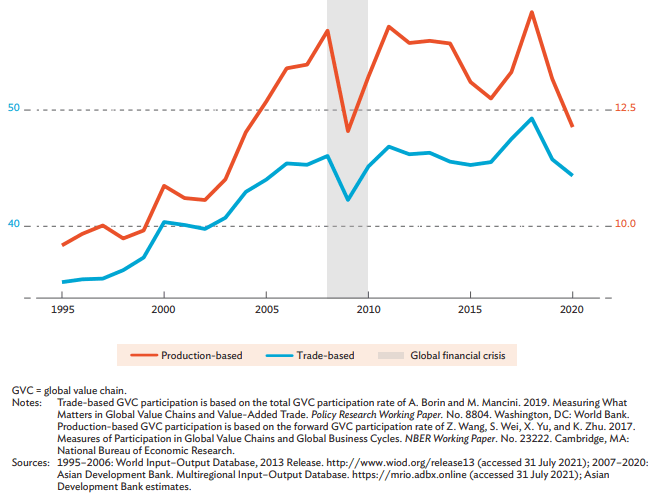A recent report released by the World Trade Organization (WTO) describes how hyperglobalization has slowed down, with possible setbacks.
Until now, globalization from the 1990s to 2020 had two major phases.
The first phase was a burst of integration from the 1990s to around 2008, written about by Thomas Friedman (2005) and Richard Baldwin (2016), among others.
This has been called hyperglobalization by Subramanian and Kessler.
According to the WTO report, this period saw a sharp drop in the cost of information and communication technology (ICT) and the rapid expansion of international production sharing, known as global value chains.
In the second phase, trade collapsed in the wake of the global financial crisis, and since then the pace of globalization has slowed markedly, ushering in the era of slowdown.
Hyperglobalization
Pol Antràs points out that, given the events that fueled hyperglobalization – including the disintegration of the Soviet Union and the entry of the People’s Republic of China into the world trade regime – a subsequent slowdown was natural.
But it is also true that vocal opposition to globalization has emerged in recent years, with protectionist policies appearing on political platforms around the world.
This suggests that rather than stalling, globalization may be in danger of reversing.
So two phases of hyperglobalization and slowdown are distinguished.
From 1995 to 2008, the rapid expansion of global value chains led to surges in both participation rates: the trade-based rate increased from 35.2 to 46.1% and the production-based rate increased from 9.6 to 14.2 per cent. hundred.
Global Value Chain Participation Rates, World, 1995–2020 (%)

After the global financial crisis, the relocation of supply chains caused a sharp but temporary drop in both rates, which recovered in 2010.
Since then, according to the report, they have remained roughly at the same levels.
And while the Covid-19 pandemic has been a drag on participation in global value chains, participation rates have been in line with the generally anemic trend seen since 2010.
In 2020, the trade-based participation rate was 44.4% and the production-based rate was -12.1%.
While participation rates have stagnated, face values continue to grow.
Global indirect exports, the numerator of the rate of participation in global value chains based on trade, reached a record in 2018 of 13.6 trillion dollars, although they fell during 2019-2020.
![]()

